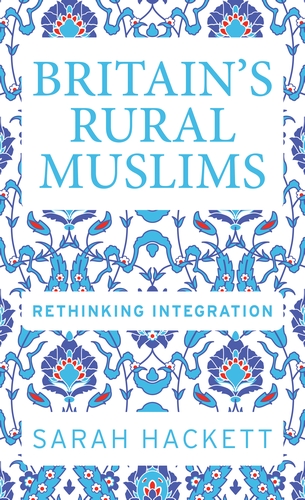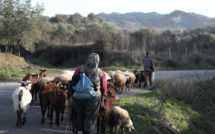
 This is part of our special feature on Rurality in Europe.
This is part of our special feature on Rurality in Europe.
Through the many studies, stories, and films made about post-war Muslim migration to Western Europe, each major country projects its own dominant image. France has its North African immigrants, once subjects or citizens of France, mainly Arabs and Berbers from Algeria who carried colonial struggles across the Mediterranean and who today occupy desolate housing projects around Paris. Germany has its Turks who remained guest workers, traveling back and forth between Berlin’s Kreuzberg and poorer regions of Turkey. The Netherlands has, not so much its former subjects, but the Moroccans and Turks who came for work in the post-war boom. Of course, the patterns are not so simple—there are Moroccans everywhere—but they capture some of the demography, much of the politics, and nearly all of the media. Tropes are attractive short-hands for complex trajectories.
Britain offers a particularly striking contrast to these stories. Its most salient image is of concentrated communities of people from one region or one ethnic group, living among themselves and apart from others. And it is not difficult to find such communities. Particularly striking, for example, are streets in Leicester where nearly everyone’s family came from Gujarat by way of East Africa, until Idi Amin’s oppression sent them fleeing to the Midlands. The ethnic and religious diversity of South Asia became transplanted to the cities of Britain, reproducing the initial islanding effects by continual travel and intermarriage between that particular district in Birmingham or East London, and that particular district in Pakistan or Bangladesh.
Many fine studies of these processes have shown how communities have supported ethnic homogeneity, largely through four mechanisms. First, size: as their sheer numbers grew in a neighborhood in Britain, South Asians coming from the same region, or even village, could form their own mosque, live in the same neighborhoods, and work in the same shops or factories. Second, chain migration, especially with respect to two features of these immigration streams: the continual return to the same South Asian communities for the next generation of migrants, and the tendency to invite relatives over to work in kinship-based networks of small businesses. Third, marriage patterns in some communities that favored close cousin marriage, to an extent beyond even that found in the homelands, intensified the concentration due to chain migration. Finally, a major effect of these mechanisms has been the blurring of generations: if my father migrated from Sylhet to marry my mother, whose grandparents had migrated long before, of what generation am I?
But there are, of course, other stories of British Muslims (as is the case for each of the other countries mentioned), and they also need telling. Here enters the fine study by Sarah Hackett, who pursues the question from another angle, by starting from the range of Muslims to be found in one county, a rural one at that, and then seeing what sort of mechanisms we find. And she chose the most picture-postcard-perfect “English” county imaginable, Wiltshire, home to Stonehenge, Salisbury Cathedral, and so forth. Do they, too, have Muslims, and how did they get there?
From her interviews with Wiltshire Muslims, we learn a number of things. One is that because Wiltshire never achieved the takeoff number for tighter community formation, Muslims often ended up there by accident. An uncle needs someone to run a restaurant there, or a couple is driving through and the greenery reminds them of Bangladesh, or local factories advertise job openings and a family trying to make it in London is attracted by the lower cost of living. Usually, it seems, Wiltshire is the second or third stop, after trying out a larger city. The result is a much broader diversity of countries of origin and little residential concentration. We can guess that there was a process of self-selection, as those immigrants who found English villages appealing were not those who needed the social support of a large, single-ethnic community.
One striking outcome is the largely positive tone to their stories, when they discuss relationships with (non-Muslim) neighbors, experience in schools, and issues of integration in general. Hackett is properly, and methodologically, unwilling to accept this positive tone at face value, but she also has records of town meetings, where discussions concerning building a mosque presumably would have brought to the surface underlying hostilities. But all is not joy. In their discussions with her, Muslims are divided in their evaluations of their decisions to settle there. On the one hand their rurality may have made for fewer acts and expressions of hostility, and a relative ease of obtaining necessary exemptions and facilities, whether the provision of non-meat meals at school or finding places for worship. On the other hand, that same low density meant that Muslims were less able to build an Islamic presence, such as purpose-built mosques or halal restaurants. It also meant that personnel hired by a restaurant, for example, were usually multi-ethnic. Some interviewees said that their lives in Wiltshire have led them to consciously avoid the ethnically-specific Muslim communities elsewhere.
Hackett’s study stands out for her extensive use of official records. Sometimes, this makes for some rather dry reading, but it provides a strong evidentiary base for her conclusions. She undertakes a rather exhaustive search through local records in order to document local council deliberations and decisions. These records reveal the ways in which requests were framed. For example, in Trowbridge the Moroccan community (apparently Britain’s largest after London) obtained council support for their proposal to rent land at a nominal rate to build a cultural center, to use a section of land for an Islamic cemetery (the graves oriented towards Mecca), and funding for the Islamic Trust’s food festival. Reports of these humdrum proceedings may be a bit dry, but their ordinariness is precisely the point: things seem to have gone fairly well. The decision to focus on local records provides a useful portrait of how local government policies were developed and applied.
Hackett’s interviews reveal, unsurprisingly, a range of personal encounters with racism and with anti-Islam sentiment. Some local Muslims saw integration as made easier when they were relatively few in number; others stressed that with larger communities and Islamic associations, Muslims were better able to live Muslim lives—and women were more likely to express this last sentiment. The value of this study is its refusal to settle on one image of the “rural British Muslim,” and to provide us with a sense of the creative and changing responses Muslims have brought to their relatively rural fortunes.
John R. Bowen is Dunbar-Van Cleve Professor at Washington University in St. Louis. He studies questions of Islam, law, and society in Indonesia and Europe, and his latest books include Pragmatic Inquiry (Routledge, 2020) and On British Islam (Princeton, 2016). Awarded a Guggenheim prize in 2012 and named a Carnegie Fellow in 2016, he is a Fellow of the American Academy of Arts and Sciences.
Britain’s Rural Muslims: Rethinking Integration
By Sarah Hackett
Publisher: Manchester University Press
Hardcover / 256 pages / 2020
ISBN: 978-1-5261-1014-5
Published on November 10, 2020.




